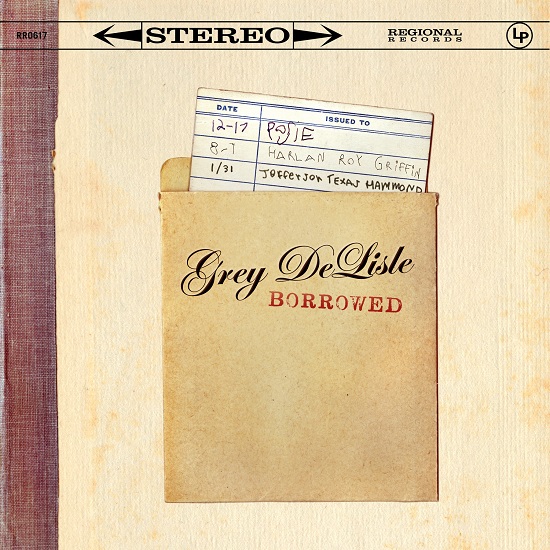
Here’s a fascinating first album to review in 2023. Grey DeLisle put her musical career on hold for fifteen years while raising a family but, like many others, the pandemic changed her plans and she found herself revisiting her favourite songs and uploading covers of them to social media. In turn, this led to working with producer Marvin Etzioni on a covers album, and what an interesting set of covers they are. She’s now working on an album of originals for release this year. Grey’s been compared to Loretta Lynn and Tammy Wynette but, with the odd exception, these songs aren’t heartbreak country.
You wouldn’t expect a country artist to be covering ‘Another Brick in the Wall’, would you? No, but that’s the album’s opening song and Grey obeys the First Rule of Covers Club; make the song your own. Whereas the Pink Floyd original is strident and confrontational, with a full band sound, Grey’s version is much slower and built around an arrangement that’s paradoxically minimal but with a full band plus strings and horns. Grey’s vocal doesn’t push hard, but it’s close-miked and dominates the mix.
The straightforward country songs like ‘Tonight You Belong to Me’, ‘Borrowed and Blue’ and ‘Valentine’ are delivered beautifully with Grey’s voice evoking the Queens of Country (more Dolly and Patsy than Loretta and Tammy to my way of thinking) with the usual side orders of strings and pedal steel; it’s on the songs with less traditional arrangements that Grey and the band work their magic.
Just a few examples for you. ‘Girl’ is a reworking of an ’Electric Warrior’ T Rex song in triple time with a gorgeous string section replacing the horns from the original, while Marie Knight’s ‘Calvary’ starts as a straightforward gospel song at the lower end of Grey’s vocal range before the first chorus erupts into a New Orleans jazz funeral with strident horns. And let’s not forget John Barry’s Bond theme ‘You Only Live Twice’, (with The Satellites Four) delivered in a very easy listening style Grey’s take on ‘Georgia on My Mind’ at the higher end of her vocal range adorned by some plaintive harmonica from Mickey Raphael (Willie Nelson’s harmonica player).
‘Borrowed’ certainly demonstrates the eclecticism of Grey DeLisle’s musical tastes and her willingness to deconstruct and rebuild a song to create a whole new work. There’s an art to reinterpreting just one song, but it’s a completely different challenge creating a coherent album full of reworkings; Grey DeLisle aces it.
‘Borrowed’ is released in the UK on Regional Records (RR0617) on Friday January 6th.
Here’s a link to the video for ‘Another Brick in the Wall’:
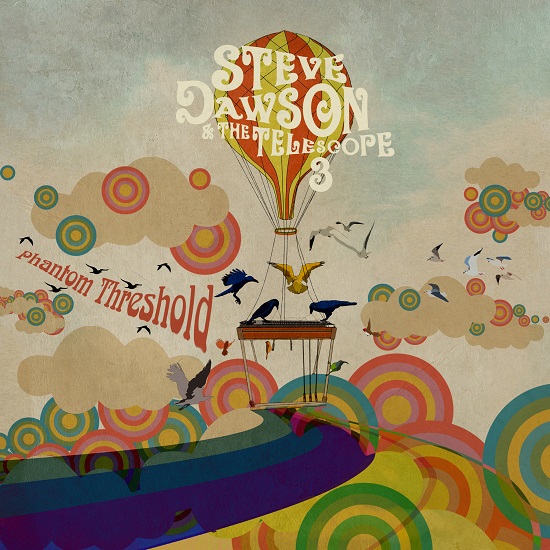
OK, with this one it’s time to share some insights into the way my thoughts and feelings about new music turn into an article on a website. The starting point is that Music Riot doesn’t do negativity; you can get plenty of that anywhere else on the internet. We want to share good live and recorded experiences in the hope that a few music lovers will buy in to them and spread the word. So the first question is, do we like it and there’s only one way to decide that and that’s by listening to it; not once or twice, probably half a dozen times and make some good, old-fashioned, scrawled hand-written notes. At that point, I know whether I want to share it and I’ll probably have a look at the press release for the first time.
By now, you probably want to know what this has to do with ‘Phantom Threshold’. Fair question; after a few listens, it’s obvious that the eleven instrumentals on the album are all soundtracks for movies that haven’t been made and might never be made. The instrumentation (more about that a bit later) and structure of the pieces are cinematic in scope and depth and that’s the starting point for the press release. It’s always nice to know that you’ve tuned in to the artist’s creative vision, however limited your understanding of that vision might be.
Steve Dawson is one of those players in the mould of David Lindley that seems to see every stringed instrument as a challenge to be conquered; he plays a lot of pedal steel on ‘Phantom Threshold’, but there are some standard electric and acoustic guitars as well as resonators, a Weissenborn and a Marxophone. Yeah, I had to search it online as well – it’s a fretless zither and you probably remember the zither from the soundtrack of ‘The Third Man’. And we’re back into movie instrumentation territory again.
You might ask why a guitar player and producer would want to create an album full of mood instrumentals, but that’s missing the point; when you’re a player and writer as gifted as Steve Dawson, why wouldn’t you do it? And with his previous record, you know it’s going to be worth listening to.
‘Phantom Threshold’ is packed with innovative arrangements and classy but unfussy playing. The stylings range from solo pieces such as the album’s Weissenborn closer ‘Whirlwind’ and the pedal steel solo interlude ‘Burnt End’ to full-on band arrangements with layers of guitars and keyboards on most of the rest of the album. On a couple of tracks, including the opener ‘Cozy Corner’, the combination of organ and slide guitar hint at Pink Floyd’s ‘Wish You Were Here’ era. While most of the titles hint at scenes, there are a couple that are more literal; ‘Tripledream’ is a piece in three sections, one of which is based around a New Orleans jazz styling, while ‘That’s How it Goes in the Relax Lounge’ starts with a lounge music feel before dipping into some Latin rhythms.
The complex arrangements on the full band pieces are even more impressive when you know that the musicians recorded their contributions remotely. Quite a feat of arrangement and stitching together, particularly when the opening track, for example, features seven different keyboard instruments on top of Steve’s guitars and the rhythm section. And clever is all very well, but Steve Dawson has created an album that you will want to listen to; you want to know what each new track is going to bring. There are so many different styles and textures that ‘Phantom Threshold’ never becomes predictable as it rattles off references to dozens of musical genres and sub-genres using most of the popular music instruments you’ve ever heard of and a few that you probably haven’t. It’s an album that musicians will love, but there’s something here for everyone and you’ll get something new from every listen.
‘Phantom Threshold’ is released on Friday August 12th on Black Hen Music (BHCD0097).
Here’s Steve playing live over the ‘Twig Bucket’ backing track:

The Guardian published an article a couple of weeks ago by Tim Burgess of The Charlatans about the state of the music business in the light of Brexit, streaming and downloads. It’s an interesting read as far as it goes and it set the cogs whirring about why we got here, where we go next and will it be better or worse, or just different.
In my lifetime, the music business has been turned upside down. In the seventies, bands went out on tour to build up a following and to promote singles and albums, which is where the real money was. If you’ve survived this long and remember all this, bear with me, it’s worth getting some historical context. No internet, no mobile phones, only three TV channels and (until October 1973) no commercial radio. So you were left with the pirates like Caroline and the erratic reception of overseas stations like Luxembourg to let you know about new music. And the music press…
Every week I bought the NME, Melody Maker and Sounds and my paper round meant I could sneak a look at Blues & Soul and Disc/Disc and Music Echo as well. By 1973, with a bar job and a Saturday job with an entertainment agent booking acts for local pubs and clubs, I had a few bob to spend on some of the music I was reading about. Add the cost of my print habit to the cost of buying an album (about five percent of the average weekly wage in the mid-seventies) and being into music was a real financial commitment (even if you took the risk of doing a few temporary swaps with your mates to dip into their choices).
Buying music in the seventies wasn’t just an investment in listening to a piece of music. You exchanged your hard-earned (cash of course) for something physical that you carried home in a bag before lowering it on to the turntable, gently caressing the vinyl with the stylus and waiting for a glorious noise to erupt from the speakers. But let’s just rewind that a few minutes. If you bought an album and you were taking public transport home, you had the chance to look at the album artwork as well. A good album sleeve was so much more than a bit of on-shelf advertising; a twelve-inch square format created opportunities for quality photography and graphic design to enhance the musical content of the package. When it worked, it was an extra visual dimension to a piece of aural art:
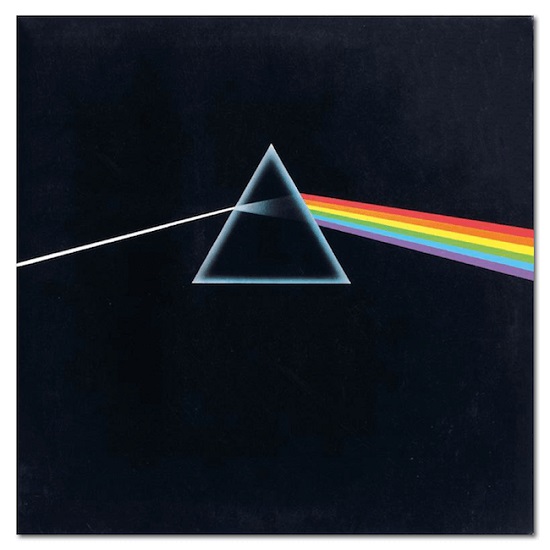
When it didn’t, it looked a lot like this (which proves that you can’t get it right all the time):
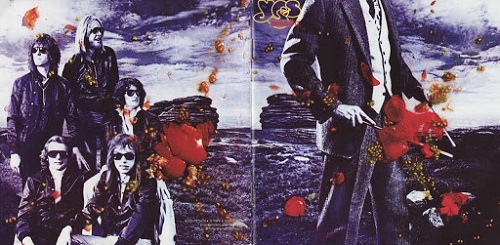
The gatefold sleeve doubled up the visual real estate (exploited perfectly on Thin Lizzy’s “Live and Dangerous” double album with a shedload of Chalkie Davies pics all over the outer and inner sleeves of the album):
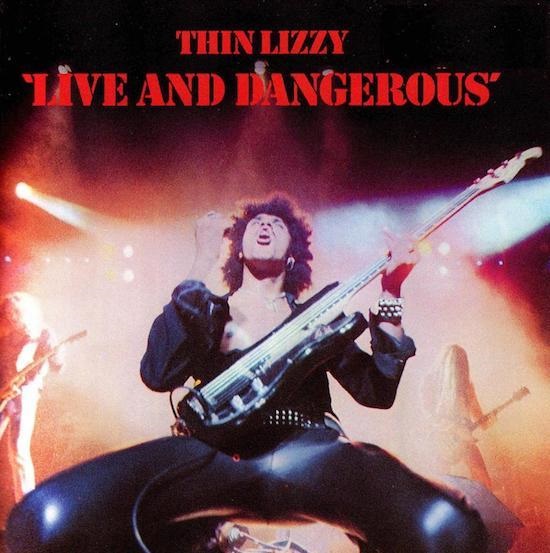
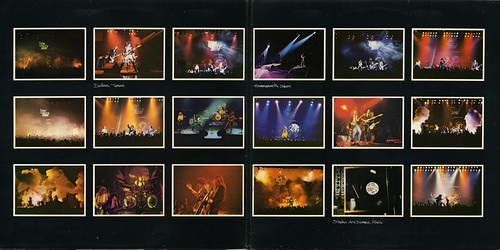
Designers started to exploit die-cut sleeves and all sorts of interesting innovations; PiL’s “Metal Box” looked really clever, but only if you hadn’t seen The Small Faces’ “Nut Gone Flake” packaging twelve years earlier.
The visuals were only part of the album experience; you could get a lot of text on a sleeve, particularly if you had a printed inner sleeve or three as well. There was all the obvious geek stuff; musicians involved, instruments played (or not played if you were Queen) and lyric sheets, but some bands made a real effort; UB40’s cover for the first album “Signing Off” in 1980 was a copy of the unemployment benefit attendance card, they’d been filling in before they broke through. Ten years later, Squeeze released a live album with a boxing concept, “A Round and A Bout” with a little bonus – they listed every gig they’d done between 1974 and 1990 on an insert with the album. Thanks guys, you’ve no idea how useful that’s been to me over the years. Seriously.
I’m sure you get the message by now. During the first vinyl era, the experience was about much more than just listening to the music. You could carry an album around at school as a sign of your taste and discernment and to impress the other gender (I pitied the guys who carried Groundhogs and Genesis albums, but that’s Darwinism for you). It was a bit like creating a mixtape a few years later and a playlist many years later. Or drinking bottled designer lager in the eighties. If you were a fan of music in the seventies or eighties you were committed and attached to it; it had a financial and emotional value. And it had a longer lifespan; since the mid-nineties, the norm is for singles and albums to achieve their highest chart position in the first week of release, but fifty years ago the climb to the top of the charts could take weeks (and probably a few bulk purchases in chart return shops to help it along).
This isn’t a dewy-eyed, rose-tinted trip down memory lane. The seventies and eighties weren’t perfect; the music business was still a business, but it was one where labels invested in bands with a view to development over several years. A moderately successful band writing their own material could make a living for a few years with royalties on sales, radio, juke box and club plays and independent labels were few and far between. Things are a bit more polarised these days; the business only supports guaranteed winners and everyone else has to do their own thing. Time for a bit of a polemic: the technology that enabled the digital revolution degraded our experience of music. Listening to compressed audio on inadequate playback systems is the norm for most people now, despite the vinyl comeback, and the majority of listeners don’t pay any attention to artwork, credits or sleeve notes. We’ve walked blindfold into accepting a gradual erosion of the musical experience in the name of progress and fashion. We also have at least one generation that doesn’t believe in physical musical formats and certainly doesn’t believe in paying for them.
Fortunately the same digital technology that devalued music by making no-degradation copying possible, then compression, along with affordable storage and massive improvements in internet bandwidth, have enabled affordable home recording. Technological improvements cut both ways and musicians are a resourceful bunch; if you can’t get a deal with a major label, what have you lost? You don’t need access to a studio; you can set up at home. You don’t need access to a major label’s mastering and pressing facilities; you can find any number of those online. You don’t need a distribution network; you can load your music up to download and streaming services and make peanuts, or you can sell CDs and albums on your website by mail order and alongside other merchandise at your gigs.
In normal times, this isn’t a bad business model; you might be able to stay afloat if you have another job, have good merchandise to sell on tour, or both. And along comes lockdown; no gigs and no pop-up shop opportunities. I wish I could honestly say that I recommended live streams, but it’s not for me; I really miss the eye contact and (selfishly) I miss the opportunity to take pictures at gigs. If it works for you, that’s great; enjoy it and make a contribution; I’ll be waiting for the moment when live music re-emerges after this terrible disease is brought under control.
Me, I’ll continue to avoid the mainstream by buying (in order of preference) vinyl or CDs directly from artists’ websites, from independent record shops and at gigs. Two people I know have opened vinyl shops in the last few years and both are succeeding despite the current trading situation; long may they continue.
And that resourcefulness and creativity that musicians always demonstrate wasn’t going to be stifled by any number of lockdowns; no way. All of those skills developed and equipment bought to set up home studios have been subtly repurposed to enable musicians to collaborate by sharing audio and video files online. I don’t know any musicians who see this as an ideal situation, but, like solitaire, it’s the only game in town. After nearly a year and millions of audio files bouncing around the internet, albums that were in progress have been completed remotely and albums have been conceived, gestated and born. It doesn’t matter how difficult you make life for musicians (or artists generally), they will always find an outlet.
Whenever we reach the new normal, whatever that may be, spend your money in a way that benefits the people making the music you love. Buy physical copies of music either directly from bands or from independent record stores – there are loads of them. Most importantly, get yourself out to as many gigs as possible. I’ll see you at the front.

Danni Nicholls
This time it’s the turn of Graham Jackson to tell us about the gig of his life. Graham’s one of those people with a huge amount of experience of the music business and artist management, but he also has something that’s much more important; he’s one of the good guys. He’s one of the people that you always want to bump into at a gig because he’s a great person to have a beer with and catch up on what’s going on. Like all of the contributors to this piece he’s passionate and knowledgeable about music and able to articulate this passion and knowledge with the written and spoken word. He takes a pretty good photo as well; the title shot here is one of his. Let’s hear about Graham’s memorable gig:
Saturday 26th August 2017, ‘The Women’s Circle’ gig at Tønder Festival in Denmark – a moment that has stuck in my mind since, a moment even now on reflection gets my heartbeat racing. I was there as Tour Manager for the wonderful UK singer/songwriter Danni Nicholls.
Tønder is a beautiful town in the Region of Southern Denmark with a population of around just 7,500 situated on the southern border with Germany – to get to the festival, the transfer is actually quicker from Hamburg in Germany than from Copenhagen in Denmark, still a good few hours but a chance to see the countries.
Tønder Festival is an incredibly friendly annual festival held on the edge of and around the town of Tønder, the music based on Folk, Roots, Traditional and Americana genres. Smaller stages offer intimate gigs in places like the Old Mill and the Pump House, along with artists such as Lucinda Williams, Jason Isbell, John Prine, Emmylou Harris, Steve Earle, Sturgill Simpson, Pete Seeger, Arlo Guthrie, Runrig, Mary Black and The Mavericks, to name a few, featured at some point in history on the main stages in Tent 1 and Tent 2.
So the scene was set for The Women’s Circle that was to be staged in Tent 2, always a popular feature with wonderful female singer/songwriters in the round. But this year, there was a real buzz about the gig that was to happen, so much so that a last minute decision was made to remove the seating to increase the capacity. Nearly an hour before it was to go live, Tent 2 was heaving with some 2,500 people crammed inside, ten rows deep outside as more tried to get in. The air was high with expectancy, this transmitting itself back stage.
The five female artists invited to perform were Dorthe Gelach (Denmark), Laura Mo (Denmark), Kaia Kater (Canada), Tami Neilson (New Zealand) and Danni Nicholls (UK) – none had met each other before but I could feel a bonding happening between them. Though the tension was building, a relaxed vibe was going on, helped by the Festival organisers arranging a birthday cake for Danni!
I took my place in the photographer’s pit, sitting next to me was Maria Theessink, the Artistic Director for the Festival.
Not knowing what each was going to sing and play, the artists listened to each other, taking it in turn as their selection of songs complemented and flowed together, drawing the audience in – incredible that so many people can listen intently and respectfully to the stories being told and to the music, clapping in time at the right time (the unique ‘Danish Clap’?), then bursting into applause and cheers that could be heard across the town. Each of the ‘Women’ was creating a stunning show, seemingly effortlessly and so natural, an absolute credit to themselves and their art, a total joy for the audience.
Then the ultimate moment came for me, Danni singing ‘Ancient Embers’, a favourite song of mine from her latest album ‘The Melted Morning’. She did not disappoint. Introducing the song about ‘self-love’ that she said she “wrote for myself”, the humour and sentiment producing a huge cheer and applause from the attentive audience. Then the performance, goodness, the whole place was electrified, I have never known a feeling like it – goose bumps, the spine tingling …it was incredible. At the end, the noise of appreciation was stunning, it brought tears to my eyes. I turned to Maria, she was the same, we just smiled and nodded to each other as if to say, “yep, that was a moment”.
I have been to special shows such as Pink Floyd at Earls Court, totally magical for the music, the lighting and the atmosphere, I never thought anything would surpass that, but there in Tent 2 at the wonderful Tønder Festival, something special happened, a ‘never again moment’.
It is so difficult to put in words, I guess you just know it and feel it when it happens, it is personal, I am sure each of us has had such a moment.
Graham Jackson – GJ Artist Services (www.gjartistservices.co.uk)
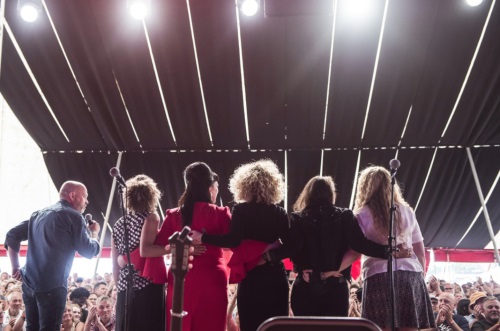
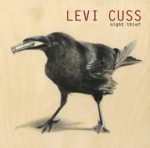 Levi Cuss has quite a back story. He’s lived an eventful life, done things that he regrets and done some time as a consequence, but ultimately it’s all grist to the mill. He’s living a more conventional life now (if writing and performing songs can be called conventional), using some of the experiences from earlier days as material for his songs and using music as a means of redemption. And that’s all very well, but is the music any good? Well, it is, as it happens; the songs are strong and the musical settings are always interesting. Producer Steve Dawson has brought in some vintage (seventies mainly) instruments and soundscapes to bring a sense of historical perspective to the narratives.
Levi Cuss has quite a back story. He’s lived an eventful life, done things that he regrets and done some time as a consequence, but ultimately it’s all grist to the mill. He’s living a more conventional life now (if writing and performing songs can be called conventional), using some of the experiences from earlier days as material for his songs and using music as a means of redemption. And that’s all very well, but is the music any good? Well, it is, as it happens; the songs are strong and the musical settings are always interesting. Producer Steve Dawson has brought in some vintage (seventies mainly) instruments and soundscapes to bring a sense of historical perspective to the narratives.
The songs are across a range of styles, but the musical settings are firmly rooted in the early seventies; the lively JJ Cale cover “Bring it Back”, a story about bringing contraband across the Mexican border which probably won’t be released as a single in the current climate, is part “Spirit in the Sky” and part Canned Heat’s “Let’s Work Together”. It’s raucous and great fun.
Without sounding derivative, the album is infused with seventies references. The opening song “Red City River” hints at Dylan and The Band, “Cut my Teeth” is country-rock and “Pills” is pedal steel-laced country about the twisted logic of assuming that pills are better than alcohol because ‘Pretty few songwriting people they take pills’. There are a few songwriting twists, “Saturday Night” is a laid-back, rather than lively take on the party night and “Grandma” is a tribute that celebrates a real life without sanitising it.
And that leaves a couple very interesting songs indeed. “Tecumseh” is a love song with a twist; where a man builds a relationship with the sister he murdered, and the closing song “Utumbo” which recreates a spacey retro synth mix of Pink Floyd and The Animals. It’s quite a way to close out an album that moves easily between retro styles with songs that have a strong autobiographical feel.
“Night Thief” is released on Friday March 10 and Levi Cuss will be touring the UK later in the year.
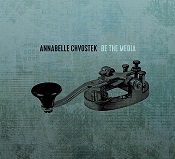 If you’re after an album that’s safe and unpredictable and you know exactly what’s coming next, then “Be the Media” is definitely not the album for you. Annabelle Chvostek’s fifth solo album moves away from the folky sound of her two previous albums “Rise” and “Resilience” to a sound that is lo-fi and embraces styles from indie thrash to psychedelia with several stops and detours on the way. It’s fair to say that with this album, you never know what’s coming next. Annabelle’s roots are in Canada, which may go some way to explaining the affinity to and parallels with Neil Young, who’s also had the odd change of direction along the way.
If you’re after an album that’s safe and unpredictable and you know exactly what’s coming next, then “Be the Media” is definitely not the album for you. Annabelle Chvostek’s fifth solo album moves away from the folky sound of her two previous albums “Rise” and “Resilience” to a sound that is lo-fi and embraces styles from indie thrash to psychedelia with several stops and detours on the way. It’s fair to say that with this album, you never know what’s coming next. Annabelle’s roots are in Canada, which may go some way to explaining the affinity to and parallels with Neil Young, who’s also had the odd change of direction along the way.
The album is built around live-band recordings with some overdubs added later and the raw, Stooges-like, power of the title song gives some idea of the direction the album’s taking, but there are still plenty of surprises to come. “Jerusalem” is mournful lyrically and musically with the added melancholy of some Middle-Eastern violin to season the mixture. “Black Hole” sets the controls for the heart of the sun with the simple, if bleak, message that we’re all irrelevant compared to the vastness of the universe, delivered over a soundscape that’s part early Pink Floyd and part Neil Young’s “Like a Hurricane”; it’s certainly dramatic. “This Night” is the closest the album comes to a love song, if you count ‘Your hand is the hand I hold to jump out of the burning tower’ as a lyric. Powerful yes: cheerful no.
“Carnal Delights” is the perfect example of the albums’s twist and turns. From a doom-laden minor key verse, the song bursts into chorus in 3/4 time that’s straight out of a sleazy 1930s cabaret routine; and yes, that is someone playing a saw (Lisa Gamble, actually). It’s an odd one, but the contrast works perfectly. “You Can Come Now” is probably closest to Annabelle’s earlier work with gentle electric guitar and a vocal that isn’t pushing at the edges her voice’s power; it’s very different from the songs it’s surrounded by. As if to cement the Shakey connection, there’s a stripped-back cover of “Like a Hurricane” featuring mainly mandolin and piano with a touch of guitar. It’s very different and it works.
“Inside the Scream/Screen” returns to the spiky guitars and claustrophobic technophobia of the title track before another change of pace to “Say it Right” which has a hint of Television-styled guitars and the album’s only example of swearing; one use of ‘fucking’ for emphasis and a bit of shock value is so much more powerful than using it in every sentence.
So Annabelle Chvostek, Tony Spina (drums), Jérémie Jones (bass and organ), Lisa Gamble (saw and backing vocals), Jordi Rosen (backing vocals), and co-producer Jeff Oehler have created a piece of work that moves from menacing to mournful to manic but never loses its grip on your attention; you may not know what’s round the corner, but you can bet it’s going to be worth hearing.
“Be the Media” is released on June 1 on MQGV (ABC123).
I know this might come over as a bit ungrateful, but I’m really hacked off by the way copies of albums are distributed by some promotion companies. I know it’s 2014 and I won’t be flown Business Class to LA while hoovering the gross national product of Colombia up my nose to interview the latest semi-literate rock wannabe, but surely it’s not unreasonable to want decent sound quality on album review copies. For anyone who’s even slightly involved with the music business (or any creative industry) it’s obvious that it’s incredibly difficult to make a living out of creativity these days; we all understand that. This isn’t nostalgia for a golden era when music journalists were worshipped and every artist’s ability was recognised and they were rewarded accordingly; it’s always been a business dominated by the need to cash in as quickly as possible, dominated by pond life who would sell their grannies for a Snickers bar, and you can find the evidence in virtually every music biography. You might not like the robust methods of Peter Grant, but at least Robert Plant, Jimmy Page, John Bonham and John Paul Jones saw some financial rewards from Led Zeppelin.
So where was I? Oh yeah, promotion copies. I know margins are tight and it’s difficult to quantify the benefits from sending out physical review copies, but there has to be a better way than transferring a bunch of MP3 files. I always prefer something that pops through the letterbox rather than into the inbox, but that’s not just me being old-fashioned. With a physical copy, you get the writer credits, possibly the lyrics and, if you’re really lucky, some sleeve notes from the artist; with an electronic copy you get a press release (if you’re lucky), maybe a photo and a few hyperlinks. I don’t mind doing a bit of research but if you’re reviewing a really new band, chances are that the website looks good but tells you zilch and the only other stuff you can find is YouTube “videos” filmed on the singer’s friend’s phone; it’s not helpful. I don’t even mind getting back to the promotion or PR company to request more information, but I have a piece of advice for you. It doesn’t matter how clearly you think you’ve worded your request, it will take at least three more attempts to actually get the information you need from the intern who’s been delegated the task of dealing with incoming email. And just bear in mind that you’re trying to get the review out before the release date.
And you know who’s to blame, don’t you. We all are, because we’ve all bought in to the hype about digital music reproduction and then compression of file sizes so we can carry our music collections around in our pockets. I’ve got nothing against portable media players as first line of defence on public transport, but how much of that stuff do you actually listen to? I bet you have songs on playlists that you skip every time they play. What’s that all about? So, now we all accept compressed formats that work for the industry because they don’t have any overheads like retail and physical storage space to worry about and they can keep copies of everything that’s ever been digitised, unless the artist refuses to play ball (take a bow the surviving members of Pink Floyd), and nothing is ever out of stock or deleted. There’s an added bonus; you don’t get patronised by a shop assistant when you buy something that’s even remotely commercial and you can have great fun trying to work out which algorithm recommended Ed Sheeran and One Republic for you. And because the transactions are all electronic, its’ easy to record sales and streams for chart purposes. A friend of mine got to 298 on the singles chart because a couple of people were heard whistling his song at a bus stop.
Seriously though, a physical review copy would be great; some of us can even play vinyl but CD’s still ok (and it fits through the letterbox), but an electronic copy isn’t the end of the world if it’s in an uncompressed format. It takes slightly longer to download, but it’s a better quality than its compressed and stunted sibling and, as a bonus, you could send an electronic press release and a jpeg of the artwork. See, it’s not really that difficult, is it?
 “Lost at Sea” is the follow-up to The Reads 2011 debut “Stories from the Border”. Although three years is a relatively long time between albums, it pales into insignificance beside the eleven years between their formation and the release of the first album. The line-up of the band is: Marcel Delrue (keyboards and programming), Jamie Russell (lead guitar, harmonica and backing vocals), Stuart Bennett (vocals and rhythm guitar), Clare Goddard (bass guitar and lyricist), Matty Goddard (drums) and Chris Goddard (percussion, mandolin, lap-steel and backing vocals) and they are located, geographically and spiritually, in the rugged area where North Wales meets the North-West of England. They’ve already had some support from BBC Radio Wales, XFM and Radio 2 and if you listen to this album that shouldn’t come as a surprise.
“Lost at Sea” is the follow-up to The Reads 2011 debut “Stories from the Border”. Although three years is a relatively long time between albums, it pales into insignificance beside the eleven years between their formation and the release of the first album. The line-up of the band is: Marcel Delrue (keyboards and programming), Jamie Russell (lead guitar, harmonica and backing vocals), Stuart Bennett (vocals and rhythm guitar), Clare Goddard (bass guitar and lyricist), Matty Goddard (drums) and Chris Goddard (percussion, mandolin, lap-steel and backing vocals) and they are located, geographically and spiritually, in the rugged area where North Wales meets the North-West of England. They’ve already had some support from BBC Radio Wales, XFM and Radio 2 and if you listen to this album that shouldn’t come as a surprise.
I hesitate to use the dreaded phase “concept album” to describe “Lost at Sea”, but there’s an unusual cohesion across the album in the musical and lyrical themes and, with some songs segueing into the next, it’s clearly meant to be heard as an album and not just as a bunch of songs. It took a while to persuade my media player to play the tracks in the right order, but it was worth it. Of the album’s ten tracks half are over five minutes long and only one clocks in at less than four minutes, allowing plenty of time to build up a mood before the vocal comes in.
The opening track, “Drowned” is a perfect example of this, fading in for forty-five seconds before the lead guitar cuts in to push the song along in a fairly traditional arrangement (ok, with a mandolin as well) before a long fade-out featuring a montage of seaside sounds. If you’re looking for lyrical themes, here’s your first one; the sea, or more accurately, the place where land and sea meet. The seaside montage fades in to “Lost at Sea” with sparse beats and some nice lap steel creating a backdrop for a vignette of two strangers looking out to sea. “Scarlet” is a wistfully reminiscent folk-styled piece which, unusually, slows down for the chorus. The instrumental tone poem “High Taid” follows, again building up layers over a percussion heartbeat which continues through the next track, “Haunted”, with its cascading keyboards and synth washes and the great line ‘Feeling spoiled like a painting in the rain’.
“Love or Be Loved” kicks off with a six-note sequencer intro which runs on through the song. There’s plenty of wah-wah guitar and a lyric which presents a series of bipolar, or black and white, choices, so it’s interesting that the next track is “Counting your Greys”, a mainly acoustic song about people growing old together. The atmospheric “Schnitzler” is unlike anything else on the album with its beats, trip-hop feel and Clare Goddard vocal which creates an almost hypnotic feel by repeating lines and part-lines throughout the song. The gentle “Shifting Sands” hints, instrumentally at mid-70s Pink Floyd with a relatively simple lyrical message that you can’t build anything without a solid foundation.
The closer, “Spitting Feathers”, (references to a local brewery and Thom Yorke there, and that’s just the title) is the busiest production on the album building up to the rising melody of the chorus, before breaking down after about four minutes to an evocative sequencer and synth-dominated closing sequence. The melancholy musical textures and the lyrical rhythms of the album combine to create a sadness that’s strangely ethereal and uplifting, while the north-western accents keep the whole thing grounded. Not one for the playlist generation, but if they don’t want melodic and lyrical invention, interesting blends of traditional instruments and technology and ten songs/pieces which form a cohesive work, that’s their problem.
Out now on iTunes.
AM – Just looking around Leigh as an outsider, it always seems to have had a bit of an artistic vibe to it; do you get that?
PB – I’m torn on this idea; if you asked me where I would love to have lived it would probably be Greenwich Village but I’m not sure that that’s a good thing. You sometimes come from hick towns and you get the mavericks and the big fish in little pools but I’m not really sure that it matters at the end of the day. Obviously New York is a great residence simply because so many great writers came from there but if Lou Reed was born in Leigh-on-Sea what would he have written about?
AM – There’s no CBGBs here is there?
PB – Well there isn’t, but it would have been interesting, and vice versa; you get parochial writers who, well, what would they have done if they’d gone to town? I’m not sure it’s important; it’s certainly relevant, where you come from and where you write about. I don’t think it’s a prerequisite of something good. You can get blood out of a stone; you can, you’ve just got to try hard. Sometimes you’re swamped; now, having written from a local area that isn’t particularly bohemian, if I now went to New York, I’d probably overwrite everything and it would just be a mass of input and no way of filtering it. Which would be great; I’d love to do it if anyone’s got an apartment in New York.
AM – And that kind of leads in to “Dunfearing…”, which is the first part of a trilogy.
PB – I’m fond of these things; I get a lot of stick for it.
AM – It’s obvious that that there’s a tremendous sense of place in it. It’s a very West Country thing.
PB – The rest of the trilogy won’t be. You were probably the only person that picked up on the idea of approaching America as the only possible escape after the end of England; the only place you can go. That’s developing a little bit and the other two parts of the trilogy are written and I’m sorting out the third one but it’s more about how you escape the idea of getting old and the only way to do it is to reinvent a youth, which never really works and the idea of America is that it’s supposed to be the land of eternal youth no matter what age you go, so there’s a cynical angle to it as well but I hope that it’s more hope than cynicism: pragmatism.
AM – Do you think that the way the music business has gone over the last twenty years has allowed people like you to do what you want to do?
PB – No, I don’t. I actually think the music business is poorer for what’s happened to it. I would rather be struggling to sign to Warner Brothers, in a way. There’s a philosophy now that anyone can do anything they like, they can record it in their bedroom and make an album, which is fine, because the punk ethos is fine, but there is a difference. Yes, someone could thrash away at three chords and sing ‘I hate Margaret Thatcher’ and be played on John Peel; fabulous, but that was it. Now there seems to be a corporate mentality attached to do-it-yourself.
AM – It’s so difficult now, with music, to actually make any money.
PB – Which is essentially what you have to do. There were people around punk who never thought they’d make any money and a lot of them didn’t but they thought they’d got a chance of maybe an album and that’s it and they’re now working in IT or whatever and that’s what they wanted. The problem is, while you’ve got that ethos is that if people are taking it seriously, then they get lumped in with it and it’s ‘Oh, you’re still here, are you?’ and now it’s even worse because nothing’s taken seriously. To include lyrics with an album now is seen as pretentious.
AM – And yet, to me, “Dunfearing…” was actually a very nice packaging job, but we shouldn’t be talking about packaging, really.
PB – I would have agreed with you a while back, but now I go back to albums I’ve listened to and loved and I think these are beautiful things, regardless of the music, I would want this album; as a piece of art, as a whole.
AM – I’m accused of fetishing the whole thing; going for the vinyl and the nice gatefold sleeve…
PB – My mantra for that is accused by whom? I’m a great fan of the Oscar Wilde saying ‘The show was a success, the audience was a failure’; it depends who’s criticising.
AM – It’s a completely different listening experience now; I sometimes stick review copies on a little MP3 player and you have to pull this thing out of your pocket to check the track title.
PB – This is the first album I’ve done with a record company as opposed to putting it out on my own and Phil’s great (Phil Penman of Drumfire Records) but if you want tracks for radio, or the hit track (not the hit single, that never happens any more), I just think ‘I don’t want one’. That’s why I hate the download culture so much; ‘I’ve listened to this album twice, these two are obviously the best songs so therefore I’ll stick them next to my favourite Kylie song on my iPod’. Well, fuck that, what are you going to do with Lou Reed and “Berlin”; take a couple of tracks from that and stick it next to Miley Cyrus. Would we do it with art? ‘I think I like that third sunflower but I think it would look nice in the Velasquez, so I’ll shift it over and Photoshop it in to that’. There’d be outrage.
AM – I think Pink Floyd were entirely right…
PB – There has to be a first time for everything
AM – When they blocked the downloading of single tracks from “Dark Side of the Moon”.
PB – Funny you should say that, but it occurred to me the other day that if I blended my music in so that it tinkled out on one track and tinkled in on the next, nobody would be able to download it; don’t tempt me.
AM – I can’t do it, I can’t buy in to the download thing; I’d rather pay full whack…
PB – And be wrong. I’ve spent ten quid on an album and it’s been bullshit apart from the track I liked. That’s what you get; you can buy a sofa for four hundred quid and the leg falls off and that’s life, get used to it.
AM – So you’re going to be recording the second album in the trilogy soon.
PB – This year we’re doing the second. The third album is very ephemeral, but I want to get that done because I want to get on to the next phase. There’s a bunch of folkie songs that I’ve written and I want to get them out of the way, so I’ll do a double folkie album next year, but I might get two albums out before then. I’ll have to put out one on my own label because I don’t expect Drumfire to do it. It’s weird really; if Bob Dylan was still fabulously creative, I’d want an album from him every month. There’s an idea that you can only put an album out once every year or two years but The Fall make an album every twelve minutes; some of it’s all right, some of it’s not but I’d rather have that.
AM – That’s just reminded of someone that I know you admire, Jackie Leven, who would do exactly the same thing.
PB – That’s what I’m aiming for actually. Jackie recorded what he called his platinum albums for Cooking Vinyl. Someone would give me a tape from a live gig I did somewhere and I’d love to release that so and that’s why I kept my own label. I can put stuff out that’s not a big production number but it’s a bunch of songs that hang together well and say ‘Have a listen to this’ and Jackie did that really well. Other than that, I’ve got a good setup for recording that I use with a few people and Mark Elliott especially and it’s easy to do. We get the band together, rehearse it and record it. “Mercenary Thoughts of a Lush”; we went up to London and recorded the whole thing in two days. Bit of punk spirit and some people say it sounds like it but that’s what it needed to be with that bunch of songs. We could never have done that with “Dunfearing…”because it needed a bit of time but there should be room to do that.
Neil Young would be cruising about, just out for a drive and he’d drive down to New Orleans and hear a bit of music and end up writing ten songs and think ‘I need to record this’, so he’d phone up local musicians, get into the studio, record them and send them to his recording company and they’ll say ‘Well you only had an album out a month ago, you can’t do this’, and I’m with him, why not. If you love Neil Young, or whoever, and you hear that a month after you’ve paid out ten pounds for his new album, he’s got another one out, I think I’d find ten quid but apparently it’s an unwritten law that you can’t do this.
AM – What I find quite interesting is that more and more bands are rehearsing stuff, getting the songs right, going into the studio and recording as a band rather than doing separate tracks.
PB – I don’t exactly do that. I like the idea but I find it takes a lot more time because you have to do a lot more takes but certainly, with the next album, it’ll be a lot looser; it’s nothing like “Dunfearing..”. It loosely follows on from that album; the third of the trilogy ties it all together. The second one will be a bit ‘what’s this?’, but it’ll make sense with the third one. I’m already on to next year with the folkie album, trying to get into Pentangle now, God help me.
AM – That’s something to look forward to then.
PB – Well that’ll be a double album because there’s a lot of songs there. Just songs that I’ve written in a folkie/country style that don’t need a lot of embellishment so they’re easier to record. There’s a lot of them, so let’s stick them out on a double album, which no-one does any more; gatefold sleeve coming up here.
AM – I bought the Ben Watt album, “Hendra” on vinyl, a few weeks ago and that had a nice gatefold sleeve and lovely packaging.
PB – I had a drink with Ben Watt, once; a very polite drink.
AM – It’s a great album and it’s nice to hear that people are still making music in that way.
PB – Well, these Drumfire gigs I’ve been doing, I supported Clive Gregson and my first reaction was ‘Christ, he’s still going’ and Martin Stephenson played there as well (at The Cabbage Patch in Twickenham) and I thought it was great because you don’t to discover that they’re dead or working in Macdonald’s or something; they’re still out there playing and that’s really reassuring. They must love it. They must love and hate it enough to carry on doing it. Any ordinary, sane person would just say ‘I’ve had my shot now’, but the rest of us drink ourselves to death and write songs.
AM – The first time I saw you play was supporting Dean Owens in Clerkenwell at Drumfire gig. I spoke to Dean and he wasn’t happy because the venue was half-empty because they hadn’t used the posters he’d sent to publicise it and that must be incredibly frustrating.
PB – This was the other myth about myth about punk, that you used to have all these gigs going on everywhere. If you had a punk band or a new wave band or a post-punk band, you could probably get a few people to turn up but if it was a solo, forget it, it would be the owner and his dog, and his dog will hate you.
Which brought us neatly back, almost full circle, to Phil’s punk beginnings and the end of the interview.
 I first heard about the Radio (in my) Head project over a year ago when I met up with a couple of the people involved in putting the album together. It’s fair to say that it’s been a fairly long flash-to-bang time, but the end result certainly is a cracker (sorry). We’ve been publishing fairly regular updates on the album’s progress and reviews of the singles released so far (as well as a few unrelated singles from the artists involved), so the final release could have been an anti-climax; it isn’t, because this is a very, very good album. Normally, I’d give you a bit of background on the artists, but there are eleven of them, so you can find all you need to know here. I try to avoid track-by-track reviews as well, but there really isn’t any choice here, so I’ll start at the beginning, leaving out the songs we’ve already reviewed as singles.
I first heard about the Radio (in my) Head project over a year ago when I met up with a couple of the people involved in putting the album together. It’s fair to say that it’s been a fairly long flash-to-bang time, but the end result certainly is a cracker (sorry). We’ve been publishing fairly regular updates on the album’s progress and reviews of the singles released so far (as well as a few unrelated singles from the artists involved), so the final release could have been an anti-climax; it isn’t, because this is a very, very good album. Normally, I’d give you a bit of background on the artists, but there are eleven of them, so you can find all you need to know here. I try to avoid track-by-track reviews as well, but there really isn’t any choice here, so I’ll start at the beginning, leaving out the songs we’ve already reviewed as singles.
The opening track, “The National Anthem” by STRNGRS, which eases the listener into the album doesn’t depart radically from the “Kid A” original but replaces the funk groove with a rockier, heavier feel, a bass sound that wouldn’t be out of place on a Kasabian track and a vocal with more than a nod in the direction of Brian Molko. You just know that Black Casino and the Ghost will put their own very individual stamp on “Packt like Sardines in Crushed Tin Box” with an incredibly heavy bassline and Elisa Zoot’s breathy but powerful vocals driving the song along; it doesn’t disappoint.
Stoneface Travellers are the first band to really make a song their own with a version of “My Iron Lung” that replaces the original’s “Dear Prudence/ Lucy in the Sky…” guitar sounds with straight ahead blues riffing. Where the original breaks down into a noisy middle section, this becomes quieter ahead of an extended solo from Emile Gerber. It’s the first radically different version on the album. Yoya’s take on “Wolf at the Door” replaces the mainly acoustic instrumentation of the original with samples played backwards and forwards, loads of electronic sounds and a vocal which goes from pure to fractured in the space of one line; it took Marianne Faithfull twenty-five years to do that.
There are good, and very good vocal performances on the first half of the album, but the first truly outstanding vocal is on Amy Hannam’s version of “Street Spirit (Fade Out)”. The song builds gradually from a chiming guitar intro with the piano providing the bass and a very close-miked vocal which demonstrates the quality and power of Amy’s voice, particularly when joined by the perfect harmonies in the chorus. It has a very 70s prog feel at times; there’s a passage where the vocal is reminiscent of Pink Floyd’s “Great Gig in the Sky” and the piano is straight out of “Tubular Bells”. And, yes, it does fade out. Skeye’s version of “Karma Police” again has a retro feel using traditional rock band instrumentation and adding organ to the mix in traditional 70s style. The vocal is pure and clear until pushed hard when it becomes more raw and rocky and it’s another song stamped with the style of the performer.
Malin Andersson’s version of “Exit Music (For a Film)” has electric and acoustic guitars providing the backing for Malin’s breathy vocal (close-miked again) before adding a violin, in contrast to the original’s drums and synths in the final third of the song ; it’s another excellent version. Alexey Zelensky tackles the only non-album track of the project, “Staircase”, which was released on “The Daily Mail” single. Many of the elements of the arrangement are similar to the original, including the UK garage/drum ‘n’ bass drum patterns and chiming guitars but Alexey adds some powerful multi-tracked lead and backing vocals and guitar. And I think you can guess what’s coming at the end of the album.
The closer is Bethan Mills’ version of “Creep” and it’s a classic. I must admit to hearing a demo version of this a few months ago and it’s been really difficult to keep this one secret; it’s a powerful and original take on the song that Thom Yorke seems to hate so much now. The song opens with understated piano before Bethan’s (close-miked again), intimate vocal comes in. Drums and bass kick in after the first chorus, but the vocal still punches through the arrangement. There’s a breakdown back to the opening arrangement on the “Whatever makes you happy…” verse before an epic finish featuring a big guitar solo with squalls of controlled feedback drop out to leave a plaintive vocal to end the song. I’m a huge fan of the Chrissie Hynde unplugged version of “Creep”, but I think this version just shades it in a straight fight.
So, it could have easily been a bunch of tired retreads of Radiohead songs but it’s much, much more than that. Project curator John O’Sullivan has pulled together a bunch of people from all over the world to put their own stamp on their favourite Radiohead songs. Listening to the album for the first time, you have no idea of what’s coming next and the surprises are all pleasant. There aren’t any average tracks here; they’re all well thought-out and very well performed. My personal highlights are Amy Hannam’s version of “Street Spirit” and Bethan Mills’ version of “Creep”, but I’ll happily listen to any song on this album.
The good news is that from October 29, you can hear the album in all its glory by downloading it on iTunes here.
What are the odds on Portis(in my)Head next?


